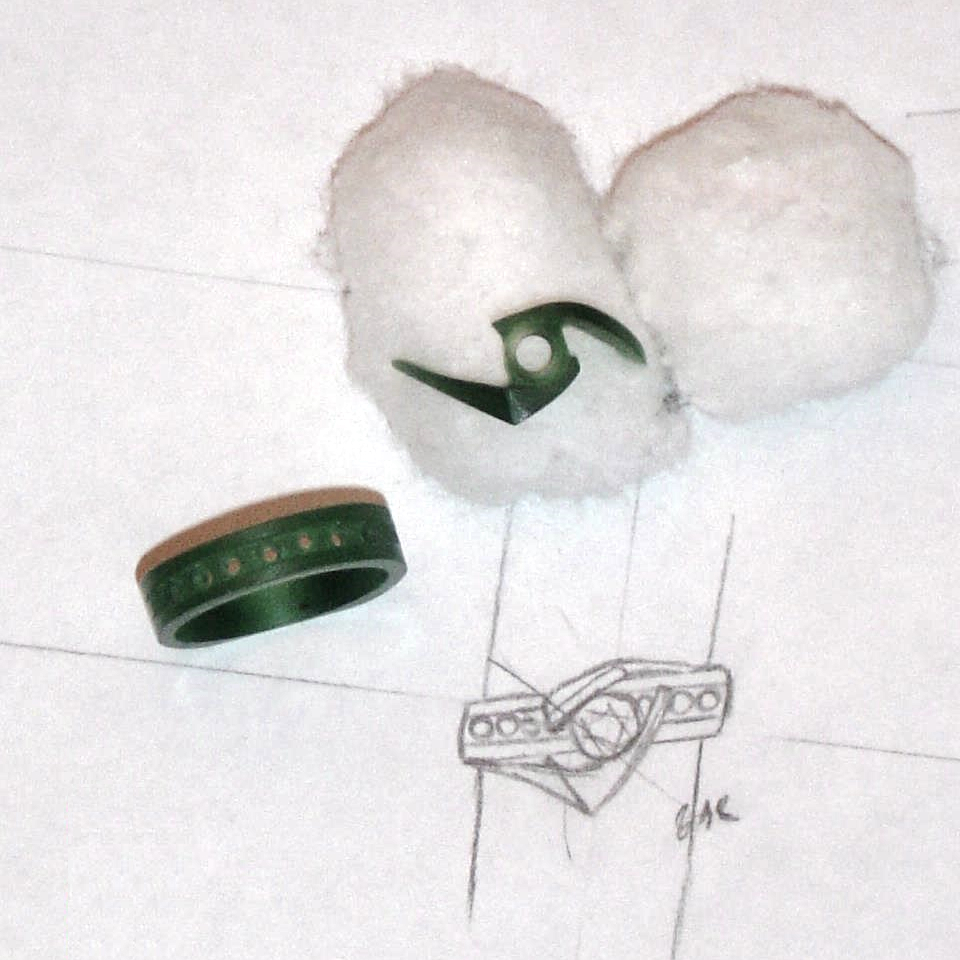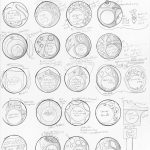Below is the description that I share to let people know what I do as a Jewelry Educator.
I felt it might be wise to look at this statement, “deconstruct” it and expand on it so you can see my reasoning for writing what I did. it has a lot to talk about and even more importantly, think about.
My statement:
As a Jewelry Educator, I strive to blend historical and modern methods of jewelry design and metalwork via lectures, teaching, and hands on learning in a variety of traditional and contemporary materials and processes. I teach the formal principles and elements of design along side of conceptual elements. The history of jewelry is also discussed and shared to better understand the creative process at an intuitive level. By teaching the formal principles & elements of design along side of conceptual elements concurrently, this enables a student to prepare for independently and objectively evaluating designs and processes in jewelry as well as develop their own individual narrative in their jewelry designs as well as determine how jewelry fits into and affect the material culture of our society.I am available for interviews or lectures at any time. Please contact me for more information.
Let’s examine and deconstruct this sentence by sentence.
“I strive to blend historical and modern methods of jewelry design and metalwork”
By examining jewelry from the past to find clues to how it was made, we can find clues to how life in the past was lived. By examining the materials, colors, and symbolism of each piece, we learn about the culture it came from. While we may not learn as much as we could from a portrait or a slice of society frozen in a print from a woodblock or lithograph, we can still glen important information about the material culture of that time. We can learn what may have been important to the owners of these items and what they thought was important enough to be remembered.
By examining jewelry from different eras of the past, and by contrasting that with jewelry of our modern era, we can bring a heightened sensibility and connection with the metalworkers of the past into our own designs. In a way, this shows a reverence to those who came before us.
Having knowledge of modern jewelry manufacturing processes is not enough to be a well-rounded jeweler.
You also need to be well read in historical manufacturing techniques. By having made jewelry using only the tools and methods of manufacturing that would have been available in the past, it provides an accurate idea of what could have been done. Being able to examine a small item such as a piece of jewelry and being able to interrupt the marks left by tools during the manufacturing process is very important. Marks and impressions left by the manufacturing process hint at the tools and techniques used. This leads to an understanding of material culture of the past and how it relates to modern jewelry design.
It is also important to remember, more often than not, there is no ‘best way’ to do a task. Differences in the interpretation of an image, or the way an extant item was formed can lead to different, but equally legitimate methods and manufacturing processes. It is important to remember that the processes of manufacturing jewelry have changed very little over the centuries, but even small changes in process can lead to different outcomes in the aesthetic principles underlying and guiding your work as an artist. This in turn leads to a unique voice in design and metalwork that is yours alone.
“via lectures, teaching, and hands-on learning in a variety of traditional and contemporary materials and processes.”
This is me telling you that I will teach you as best that I can. Every student learns best in their own way. I like to believe that there are four established learning styles: Visual, auditory, written, and kinesthetic. I like to add multimodal as a possible fifth style for those who may switch between the first four learning styles.
Every individual learning style is affected by the various senses as well such as memory, emotion, logic, association, movement, energy level, etc. The list goes on is fluid as the list items can vary in order due to how each person learns best. It also varies with experiences in life, motivation, acquired skills, practice, focus, repetition, exposure, vocabulary, culture, and preferred learning modalities.
It is for this reason that I strive to make sure that I try to share concepts and knowledge in such a way that they are easily understood by those I am teaching.
I recognize that as a visual learner, I tend to slip into that mode when discussing and sharing information, so I have to be sure that I address each step in ways that others understand as a person’s learning preference has a direct impact on their absorption of knowledge.
Not only is the way people learn important, the tools used can vary as well. Many processes can be more easily taught using alternative materials to better understand concepts. While a traditional material may work fine, more contemporary materials can be used to demonstrate processes and techniques as a learning tool. And later on, these contemporary materials can be used to further your unique voice as a designer.
‘I teach the formal principles and elements of design alongside of conceptual elements.’
The elements of design are what are used to create a piece of jewelry. That is lines, shapes, value, etc., while the principles of design (some of which are balance, rhythm and repetition, emphasis, proportion & scale, and harmony) are how the different elements are used together.
The fundamental principles of design are Emphasis, Balance and Alignment, Contrast, Repetition, Proportion, Movement and White Space. These principles of design work together to create something that is aesthetically pleasing.
Conceptual elements are not visible. They cannot be perceived. They are, instead, imagined and conceived.
A good jeweler can think at an abstract level and easily apply their insights to the design and execution of a piece of jewelry.
The conceptual elements are instrumental to the visualization of design.
Your ability to analyze hypothetical situations and abstract concepts to compile insight into the design for a piece of jewelry leads to an astute understanding of why something is being done and allows you to see in which order the different steps of the process needs to be done to realize & achieve your finished concept as a real, tangible piece of jewelry.
These principals and elements of design in combination with conceptual elements heighten and expand your abilities to express your voice as a jeweler and artist.
‘The history of jewelry is also discussed and shared to better understand the creative process at an intuitive level.’
It is important to know that the purpose of jewelry has changed in every era. While always in some way decorative adornment, it was also many times a talisman, a way to show rank or wealth, or may have conveyed some message that we can not ever guess at. From the first time natural materials and native pieces of metal was first crudely shaped and drilled. The creative process was there to bring a concept to reality.
Later on jewelry reflected the hierarchical conscious society it was made in. The more wealth you had, the finer your jewelry would be. The poor wore copper and base metals such as pewter set with pieces of colored glass, while the rich wore silver and gold with real polished gems. Color and religious inscriptions, believed to protect the wearer, were important. Your strength as a jewelry designer comes down to the innate understanding of something that those before you learned as well: “a piece of jewelry is always more than the sum of its parts”.
Many times, we as designers go with our first intuitive instincts when designing because we have studied and learned to the point that our brains work making design connections that our conscious brain can not do in a slow methodical way.
‘By teaching the formal principles & elements of design alongside of conceptual elements concurrently, this enables a student to prepare for independently and objectively evaluating designs and processes in jewelry as well as develop their own individual narrative in their jewelry designs as well as determine how jewelry fits into and affect the material culture of our society. ‘
This is where all of the education gives you your voice as a jeweler. This is where you can start helping others find their voice. And where you can see and understand a little bit better how jewelry fits into material culture in the past, and now.
THIS IS YOUR VOICE.
As always, please comment and I will reply as soon as possible.



